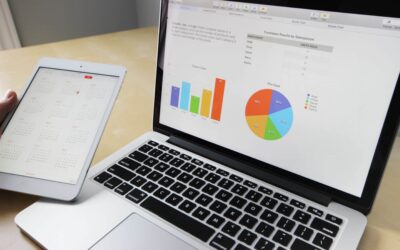The adage is as true in business practices as it is in personal practices. The start of a new year, whether it’s the calendar year or academic year, is the best time to evaluate or re-familiarize yourself with your goals and the strategy adopted to achieve those goals.
When it comes to fundraising, effort is everything. Or is it? One could argue that knowledge is just as important. An Advancement department that provides the information needed to reach their fundraising goals fosters effort through knowledge. Your reporting solution can help provide this knowledge and invaluable insight to your gift officers for tracking strategy effectiveness and achieving your fundraising goals.
Is Your Fundraising Strategy Working?
The initial step to successfully track fundraising strategy is to determine what information provides the best indicators of meeting the goal.
In the grand scheme of fundraising, the amount of total contributions is key. Staying informed of the bottom line is important for management and gift officers alike, but knowing the specifics behind the total dollar amount is crucial for gift officers to assess if their current efforts are working.
Metrics
Total contribution data can be filtered using a variety of metrics that can assist gift officers with trend analysis and performance management:
Group/Individual – comparison of teams or individual gift officers
Examples –% of total contributions for each team, $ amount of total contribution per gift officer
Time periods – time comparison based on specific data or based on organization/gift officer preference
Examples – YTD vs. Previous YTD, Q1 vs. Q2, Monthly, Yearly
Campaigns – comparison of specific campaigns or campaign types
Examples (Campaigns) – Annual Fund 2015-16, Annual Fund 2016-17, Fieldhouse Renovation
Examples (Types) – Annual Fund, Scholarship, Capital
Designations – comparison of specific designations, fund codes/FOAPAL types
Examples (Designations) – College of Law, Endowment, Center for the Arts
Donors – comparison of donor types, demographics
Example (Donor Type) – Alumni, Corporation, Parent
Example (Demographics) – Age range, Ethnicity, Education level
Metrics can also align directly with goals or objectives. For example, if an objective is to expand international fundraising by 30%, filter the total contributions by donor country and report the % of US and International contributions for the current YTD and previous YTD.
Presentation
Effectively presenting the data is the next step in monitoring goal progress. Your time is best spent on fundraising activities, not deciphering a spreadsheet of statistics or dollar amounts.
An easy-to-read graphical representation of the data, such as a dashboard, provides a quick overview of goals and progress and immediate delivery of real-time data. Use various design elements to display summary information, including charts and OLAP cubes. Both charts and OLAP cubes provide drill-down functionality for in-depth analysis of the underlying data.
Once the pertinent data is retrieved, measured and presented, your gift officers will have a better grasp of what’s been attempted, what’s been accomplished, and what can be improved.
Now, Dig Deeper
Once the strategy has been evaluated, and whether it is on track or needs re-alignment, the next course of action is essentially the same – figuring out where to go from here. If you are on target, how do you stay the course? If your strategy needs a make-over, where can efforts be re-directed?
In either case, how can your reporting solution be utilized to further assist your gift officers and reach your goal?
Statistical Reporting
Filter data more finely to expose underlying trends and target untapped resources, using the metric ideas above as a starting point. For example: What contact method produces the most wins – calls, email, events, or visits? Are alumni with a certain degree or from a particular campus more apt to be donors? Which donors/constituents have a sustainable stream of income?
Process Management
An important skill that gift officers must possess is good time management. The data needed to schedule and complete daily tasks is accessible, but how long does it take to find and pull together? Streamline the process and design a ‘command center.’ This lets each gift officer quickly view his/her own information, including Next Steps, Planned Solicitations, Pending Pledges, Contacts and current progress status of goals.
Organizational Support
A large part of a gift officer’s job is communicating with prospects and donors. The search for the necessary contact and personal information is time consuming. Create a dashboard that pulls and combines this data, along with giving history and other data used frequently by the gift officers. The convenience and easy access will equate to less time on the computer and more time interacting with constituents.
Summary
Start the year with a renewed focus on using your reporting solution to dive deeper into your Advancement data. Providing gift officers with better and more useful information will help broaden their efforts in meeting (and dare I say exceeding?) your fundraising goals. Here’s to a successful year – cheers!





0 Comments
0 Comments